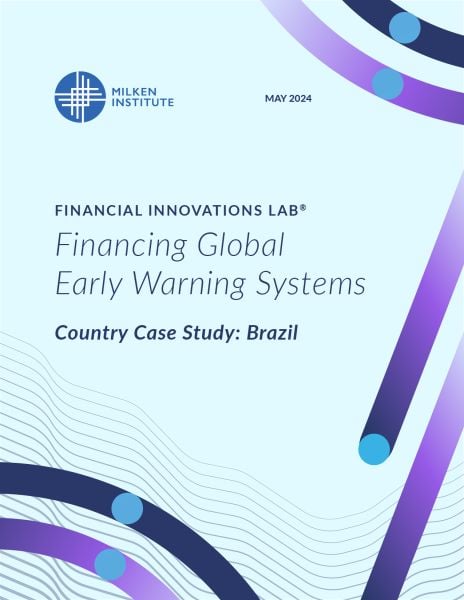
Financing Global Early Warning Systems: Brazil
During COVID-19, Brazil recorded the second-highest global mortality rate, with ripple effects extending to the economy. Unemployment surged to over 13 percent, and economic growth contracted by more than 3 percent in the first year of the pandemic. The services sector, which accounts for 63 percent of GDP and 68 percent of the workforce, contracted by 8 percent. Prior to that, Brazil contended with the yellow fever outbreak (2016-2019) and the Zika virus (2015-2016).
Since 2020, the Milken Institute has promoted collaboration to develop and improve early warning systems (EWS) for pandemic preparedness and health security, convening experts and stakeholders to outline a vision for a global early warning network, as well as key considerations for governance, data, and financing. The early warning network would predict, detect, and monitor potential infectious disease outbreaks through cross-sector coordination, data collection, and data analysis, identifying unusual patterns or upticks in key indicators to prevent or mitigate disease spread.
To gain a more nuanced understanding of the challenge of creating a global EWS, the Institute conducted in-depth interviews with national and local stakeholders and organized roundtables, with a focus on Indonesia, Brazil, and Kenya.
This case study focuses on Brazil. With dense urban centers (where nearly 90 percent of the population lives), a landmass that spans the Amazon rainforest and borders with 10 countries, and a tropical climate, Brazil is particularly susceptible to vector-borne diseases and the rapid spread of outbreaks.




